The ancient Town of Pembroke dates back to the 11th Century, when the first castle was built. Over the centuries the castle was updated and expanded to become the great structure that can be seen today- the birthplace of Henry Tudor. What more fitting a place is it then to have the War Memorial to the men of the town who lost their lives during both World Wars sited at the entrance to this magnificent fortress. This granite obelisk cenotaph stands on the green by the entrance to the castle, and contains the names of the fallen of the Parishes of St Mary, St Michael and of Monkton. Each relevant Church also houses its own separate memorial, some with slight differences in the names. Many thanks again to Les Nixon for supplying photographs of the War Memorial, and to Mike Berrell for supplying photos of the individual Church Memorials. This page commemorates the men of St. Mary’s Parish who fell during both World Wars.
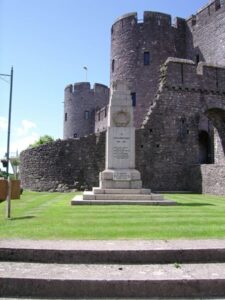
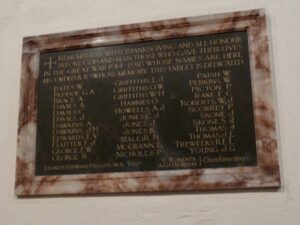
The Great War, 1914-1918
William John Bate, Private, 89263, Royal Welsh Fusiliers. William was the son of Richard John and Martha Bate, of 12, West Street, Orange Gardens, Pembroke. He had enlisted at Carmarthen into the Army, and was posted to the 16th Battalion, Royal Welsh Fusiliers, part of 113 Brigade, 38th (Welsh) Division. The division had moved to France during December 1915 and had served in the Fleurbaix sector before moving to the Somme in June, 1916. They then fought at Mametz Wood, taking the wood at a high cost, before moving to Ypres where they were to remain for the next twelve months, fighting at the Battle of Pilckem and the Battle of Langemarck. In March 1918 the Germans launched a desperate offensive on the Somme, and the 38th Division moved south to the Somme area to stem the advance. Here they remained until August 1918, when they launched an attack which resulted in the opening of the ‘100 days offensive’ which ultimately won the war. During the coming weeks the Welsh drove on through the Hindenburg Line, up towards the Forest of Mormal, which is where William was killed on 2 November 1918. He was just 19 years old, and is commemorated on the Vis-En-Artois Memorial, France.
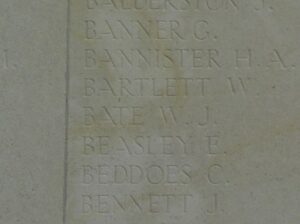
Albert George Beddoe, Private, 2564, Monmouthshire Regiment. Albert was born at Pembroke in 1886, the son of George and Mary Beddoe. He married in 1907, and by 1911 was residing with his wife Lily Beddoe at 10, King Street, Cwm. He enlisted into the 3rd Battalion, Monmouthshire Regiment, which was attached to 83 Brigade, 28th Division. The Division formed in England between December 1914 and January 1915 from regular units returning from India, Singapore and Egypt. During January 1915 it moved to France, landing at Le Havre and moved to the Western Front, where it saw its first major action during the Second Battle of Ypres. Albert was killed at Ypres on 2 May 1915, aged 29. The division was virtually annihilated here and was disbanded two weeks later. Albert has no known grave, and is commemorated on the Ypres (Menin Gate) Memorial, Belgium.
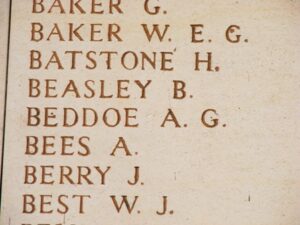
Arthur Thomas Brace, Seaman, M25849, Royal Navy. Arthur was born at Pembroke on 20 September 1893, the son of Alfred and Eleanor Mary Brace. Prior to the war the family had moved to Main Street, Pembroke, which was his father’s home town. Arthur enlisted into the Royal Navy on 11 April 1917, and trained at HMS Victory. His first posting was aboard HMS Empress of India, then to HMS Victory II, and HMS Magic. He was hospitalised in January 1918, and his health never really recovered, so Arthur was discharged from the Royal Navy. He died in Pembroke on 20 September 1921, aged 28. Arthur’s death cannot be linked to his war service, and he died after the CWGC cut off date for commemoration. He is buried at Monkton Cemetery, Pembroke.
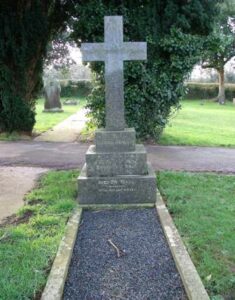
Albert Davies, Petty Officer Stoker, 302855, Royal Navy. Albert was born on 2 February 1884 at Pembroke, the son of William and Sarah Davies. He enlisted into the Royal Navy, and served as a Petty Officer Stoker aboard HM Submarine E6. On 26 December 1915 HMS E6 left Harwich to carry out an anti-submarine patrol in the North Sea. As the submarine neared the Sunk Light Vessel she was signalled by a patrolling torpedo boat to keep clear. E6 continued on her course and within view of the torpedo boat struck a mine and disappeared. All aboard were killed including Albert, who was 31 years old. He is commemorated alongside his former crew members on the Plymouth Naval Memorial, Devon.
George Edwin Carlton Davies, Lance Corporal, 760900, London Regiment. George, known as Carlton, was born in the parish of St. Mary’s, Pembroke in 1877, the son of Lewis George Davies and Ellen Miriam Davies. His father had served in the Royal Navy for many years and by 1911 he was a pensioner, living with the family at 20 Stackpole Festing Road, Southsea, Hants. Carlton lived at 23, Gloucester Street, Victoria, London prior to the war, and worked as a surveyor. He enlisted on 13 November 1915 into the 1/28th Battalion, London Regiment (Artists Rifles). The battalion was used as an Officer Training unit, until joining 190 Brigade, 63rd (Royal Naval) Division, on 28 June 1917. The division fought around Arleux, during the Battle of Arras, before moving north to Ypres, where it took part in the Second Battle of Passchendaele. Its next major action was at Cambrai, during the Action of Welch Ridge, and it was still in the area when the Germans launched their Spring Offensive on 21 March 1918. Carlton was killed during the desperate fighting that followed, on 25 March 1918, aged 40. He has no known grave, and is commemorated on the Arras Memorial, France, on Bay 10.
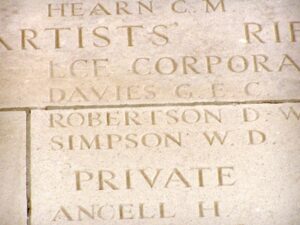
James Victor Davies, Private, T/2434, Queens Royal West Surrey Regiment. James was born at Pembroke, the son of James and Alice Kathleen Davies. The family later resided at 44, Wheatstone Road, Southsea, Portsmouth. James enlisted at Guildford into the Army and was posted to the 2/4th Battalion, Queens Regiment, part of 160 Brigade, 53rd (Welsh) Division. The 53rd Division moved to the Mediterranean, sailing from Devonport in July, 1915 arriving at Mudros by the 5th August, 1915. From here they moved to Gallipoli, landing on the 9th August. Here they immediately faced the chaotic leadership that was to lead to the ultimate failure of the campaign, and spent the next few days in isolated pockets, fighting against a Turkish counter-attack during the Battle of Sari Bair, and then at the Attack on Scimitar Hill. James was wounded during the first days fighting, and died of wounds aboard a Hospital Ship on 11 August 1915 aged just 18. He was buried at sea, and so is commemorated on the Helles Memorial, Gallipoli.
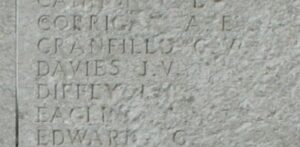
Albert Dawkins, Private, 228, Royal Munster Fusiliers. Albert was the son of George and Sarah Dawkins, of 4, North Street, Golden Hill, Pembroke. He enlisted at Pembroke into the Army prior to the war, and was serving with the 7th Battalion, Royal Munster Fusiliers which formed at Tralee in August 1914. The battalion became part of 30 Brigade, 10th (Irish) Division. On 27 June the Division received orders to prepare for service on Gallipoli, and embarked at Liverpool on 9 July. By the end of the month most units had assembled on Lemnos and between the 6 and 7 August 1915 landed on Gallipoli at Suvla Bay, less the 29th Brigade, which went to ANZAC Cove. The main body made an attack on Chocolate Hill on 7/8 August. Parts of 29th Brigade took part in actions on Sari Bair between 6 and 10 August, and Hill 60 later that month. Albert was killed in action at Hill 60 on 17 August 1915, aged 27. He is commemorated on the Helles Memorial, Gallipoli. His brother John was killed in 1918.
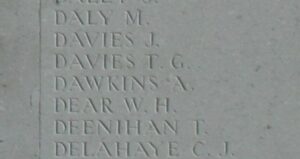
John Dawkins, Corporal, 245980, Durham Light Infantry. John was born at Neyland in 1894, the son of George and Sarah Dawkins. The family resided at 4, North Street, Golden Hill, Pembroke prior to the war. John enlisted at Pembroke into the 4th Battalion, Welsh Regiment, but was transferred to the 1/5th Battalion, Durham Light Infantry, which was attached to 151 Brigade, 50th (Northumbrian) Division. The division moved to France during April 1915 and saw their first action at Second Ypres. It then fought through the Somme Offensive, and also at Arras and Passchendaele, During March, 1918 they were stationed near St. Quentin, and were hit here by the German Spring Offensive of the 21st March, 1918 during the Battle of St Quentin. They took part in a gallant rearguard action during the Actions at the Somme Crossings, and then at the Battle of Rosieres. After suffering terrible casualties, the Division moved north to Flanders to rest and rebuild, but in April the Germans launched an attack in Flanders, around the Lys, and the Division took part in the Battle of Estaires, and the Battle of Hazebrouck. Following a most trying time on the Somme and Lys battlefields, the Division was withdrawn and sent to IX Corps, then on the Aisne, believed to be a much quieter area. This was unfortunately not the case, as the Division was hit hard by a surprise enemy attack, and fought at the Battle of the Aisne, 1918. John was killed here on 27 May 1918, aged 22. He has no known grave, and is commemorated on the Soissons Memorial, France. His brother Albert was killed at Gallipoli in 1915.
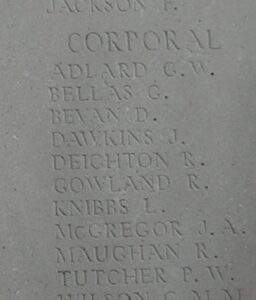
Ernest Victor Edwards, 2nd Lieutenant (Pilot), Royal Flying Corps. Ernest was born on 2 July 1889, the son of Ann and David Humphreys Edwards of Towyn House, Main Street, Pembroke. Educated at High School, Middlesbrough, and the County School, Pembroke Dock; on leaving he entered the Civil Service, and eventually became an employee of the Avon Rubber Company in London. Ernest joined the 3rd County of London Yeomanry (T.F.) on 24 April 1908. He served five years with the Colours, and joined the Reserve. He was called up on mobilization in August 1914, and served with the Mediterranean Expeditionary Force in Gallipoli, taking part in the landing at Suvla Bay in August 1915, and in much of the subsequent fighting. Ernest was wounded at Gallipoli, and invalided to Egypt. On recovery he rejoined his regiment, of which he was Sergeant, and proceeded with them to Salonika, and subsequently to Palestine, where he saw severe fighting. Ernest then transferred to the Royal Flying Corps, and was recommended for a commission, and gazetted 2nd Lieutenant on 10 February 1918. Sadly he was accidentally killed while flying Avro 504a, Serial A8541 at Ismailia on the 16 February 1918, and was buried there at Ismailia War Cemetery, Egypt. His Commanding Officer and Adjutant wrote: “I never saw anyone with more backbone; a true Britisher and much loved,” and a Cadet wrote: “To live with him was to come under the influence of an exceptional strength of character and a capacity for cheerfulness as amazing as ever present, combined with a wonderful personality.’
Hilary Gresford Evan-Jones, MID, Lieutenant, Welsh Regiment. Hilary was born on 22 January 1889, the son of the Reverend Canon Richard and Mrs. Hannah Rose Evan-Jones, of Llanllwchaiarn Vicarage, Newtown, Montgomery. He was educated at Charterhouse and Hertford College, Oxford, where he was Williams Prizeman, and was commissioned into the Welsh Regiment from their O.T.C. in October 1910, after having graduated B.A. Hilary was stationed with the Welsh Regiment at Pembroke Dock by 1911, before being posted overseas with the 1st Battalion, Welsh Regiment. Hilary was due to marry Nancy Bolton at Cyprus, but the outbreak of war saw the 1st Welsh being posted back to England, where it joined 84 Brigade, 28th Division. The battalion landed at Le Havre on 18 January 1915, and moved to Ypres, in front of Hill 60. Hilary was mentioned in despatches for crawling out into No Man’s Land and bombing the Germans soon after the battalion took up their front line positions. On 16 February 1915 the 1st Welsh were in a position near the Bluff, called Z-Trench, when they suffered heavy casualties due to shellfire. Hilary was one of three officers of the 1st Welsh killed that day. He was 26 years old, and was buried alongside the two other officers at Chateau Rosendal (now called Bedford House Cemetery), but for some reason his grave was lost, and he is now commemorated on the Ypres (Menin Gate) Memorial, Belgium. Hilary is not commemorated on the Pembroke and Monkton Cenotaph.
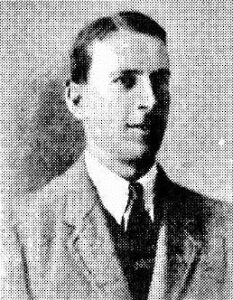
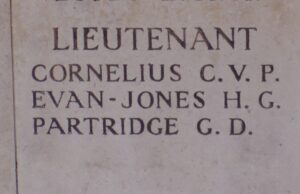
Frederick James Flutter, Sergeant, 5834, Cavalry. Frederick was born at St. Mary’s, Pembroke in 1884, the son of Richard and Margaret Jane Flutter. He had served with the Imperial Yeomanry prior to enlisting at Pembroke into the Cavalry on 27 June 1906, joining the 3rd (Prince Of Wales Own) Dragoon Guards, which was attached to 6 Cavalry Brigade, 3rd Cavalry Division. The division was formed in September 1914 and moved to Antwerp. They fought at First and Second Ypres, and the Battle of Loos, where Frederick was wounded in the shoulder. After recovering in hospital at Camiers, he rejoined his unit on 19 March 1916. In April 1917 the division fought during the Battle of the Scarpe, and this is which is where Frederick was killed on 11 April 1917, aged 33. He has no known grave, and is commemorated on the Arras Memorial, France.
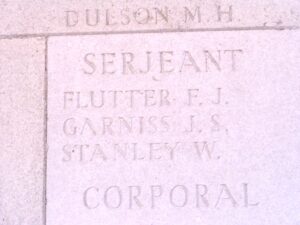
Elmor Wright George, Second Lieutenant, Welsh Regiment. Elmor was the son of Lieutenant William W. George, R.A.S.C. and Mary M. George, of Laburnum Villa, Pembroke. He had served in the Pembroke Yeomanry, but on 30 October 1917 was commissioned into the 15th Battalion, Welsh Regiment, the ‘Carmarthen Pals’. The battalion had been formed in 1914 from a nucleus of Carmarthenshire men, and in December 1915 had moved to France as part of 114 Brigade, 38th (Welsh) Division. They had fought at Fleurbaix, and the famous battle of Mametz Wood, before moving to Ypres, where they successfully captured the Pilckem Ridge, and the village of Langemarck. In April 1918 the division was moved to the Somme area to help steady the line after the German Spring Offensive, and took up positions near Mesnil and Aveluy Wood. On 10 May 1918 the 15th Welsh launched a raid on the German lines within Aveluy Wood, when they were hit by their own artillery fire, which caused many casualties among the battalion. Elmor was killed by the artillery fire that day. He was 23 years old and is buried at Martinsart British Cemetery, France. There is an individual memorial to Elmor inside St. Mary’s Church.
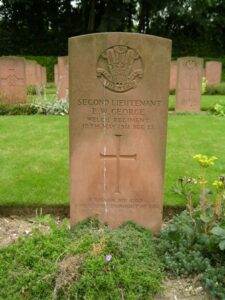
Robert George, Private, 18131, Welsh Regiment. Robert was born at St. Mary’s, Pembroke in 1885, the son of James George. He married Annie Louisa Williams at Bridgend on 20 May 1907, and the couple resided at 55, Vale View, Nantymoel prior to the war. Robert enlisted at Bridgend into the Welsh Regiment, and was posted to the 9th Battalion, Welsh Regiment, which was attached to 58 Brigade, 19th (Western) Division. The division moved to France in July 1915 and fought at the Battle of Loos. They then fought throughout the Battle of the Somme in 1916 and at the Battles of Messines and Third Ypres in 1917. In 1918 they were caught up in the German Spring Offensive near St. Quentin, where they suffered terrible casualties, and fought at the Battle of Bapaume. Robert was killed in action here on 24 March 1918, aged 33. He has no known grave, and is commemorated on the Arras Memorial, France.
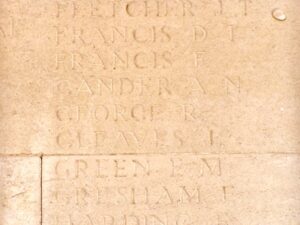
L. J. Griffiths. This man cannot be positively identified.
Osborne William Griffiths, Private, 13425, Coldstream Guards. Osborne was the son of George Llewhellin Griffiths and Edith A. Griffiths of Pembroke. He resided at Carew prior to the war, and enlisted at Hayward’s Heath into the Coldstream Guards. Osborne was posted to the 3rd Battalion, Coldstream Guards, which was attached to 4th (Guards) Brigade, 2nd Division. The Division moved to France at the outbreak of war, and fought from the opening Battle of Mons, through the retreat south to the Aisne. The Guards were at the forefront of the fighting in France. On 20 August 1915 the 3rd Battalion transferred to 1st (Guards) Brigade, Guards Division, and took part in the Battle of Loos, which was launched on 25 September 1915. It was probably at Loos that Osborne was wounded and returned home for treatment. Sadly he died of his wounds on 16 November 1915 aged 34, and is buried at Carew (St. Mary) Churchyard.
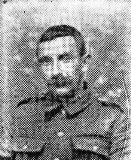
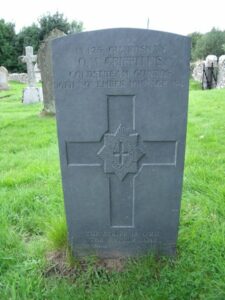
William Hopkin Griffiths, Private, 285315, Welsh Regiment. William was born in Llandeilo, the son of Thomas Saunders and Eda Griffiths. The family had moved to 5, Rock Terrace, The Green, Pembroke at some time after 1911. A Chemist by trade, William enlisted at Pembroke into the 1st Battalion, Monmouthshire Regiment, which had served in France since February, 1915 attached to the 28th Division, and had fought at Second Ypres and at the Battle of Loos. William transferred at some time to the 13th Battalion, Welsh Regiment, which were attached to the 114th Brigade, 38th (Welsh) Division, and had just arrived on the Western Front, serving near Armentieres, before being moved to the Somme in June, 1916, where they took part in the Battle of Mametz Wood, the initial assault of which began on 7 July 1916. It was almost a week before the Division cleared the wood, after suffering terrible casualties, and they were sent to Ypres to rebuild. They were at Ypres, north of Boesinghe, when they took part in the Battle of Pilckem, and then the Battle of Langemarck, where William was killed in Action on 23 August 1917, aged 20. He is remembered on the Tyne Cot Memorial, Belgium.
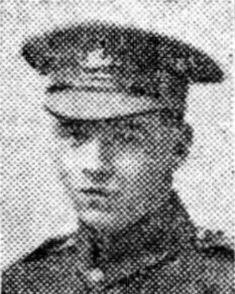
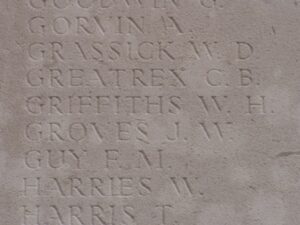
Owen Harries, Sergeant, 24091, Royal Warwickshire Regiment. Owen was the son of William and Margaret Harries, of 6, Rose Cottage, Golden, Pembroke. He enlisted at Birmingham into the Army, and was posted to the 2/6th Battalion, Royal Warwickshire Regiment, attached to 182 Brigade, 61st (2nd South Midland) Division. The division landed in France on the 21st May, 1916. The Division moved to the Flanders sector, near Fromelles, where they were to take place in a combined attack with the 4th Australian Division, as a diversion to the main attack on the Somme, but it was a slaughter, with thousands of lives lost needlessly. Such was the damage to the Division and its reputation that it was not used again other than for holding trench lines until 1917. In March the division took part in following the German retreat to the Hindenburg Line, before being transferred to Ypres. Later that year it fought at Battle of Langemarck, as part of the Third Battle of Ypres, and in late August and early September it was involved in the efforts to push the line forward at positions around Schuler Farm and Aisne Farm near Kerselaar. The Division then moved south, where it was to take part in the Battle of Cambrai. Owen was wounded at Cambrai, and evacuated to the Base Hospital at Rouen, where he died of his wounds on 17 December 1917. He was 26 years old, and is buried at St. Sever Cemetery Extension, Rouen.
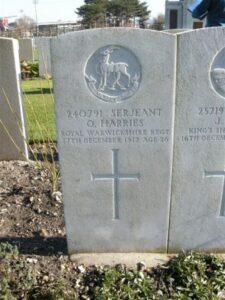
Albert John David Howells, Private, 17023, Royal Welsh Fusiliers. Albert was born at St. Mary’s, Pembroke, the son of Thomas and Mary Ann Howells. Prior to the war he resided with his wife, Mary Jane Howells, at 42, Station Road, Nantymoel. He enlisted at Bridgend into the Army and was posted to the 1st Battalion, Royal Welsh Fusiliers, part of 22 Brigade, 7th Division. The Division was formed during September, 1914 and landed at Zeebrugge on the 6th October, 1914. The City was already falling however, and so the Division was moved to Ypres, where they became the first British Division to hold the city. They fought during the First Battle of Ypres, and helped stop the German advance through Belgium, and in March, 1915 fought at the Battle of Neuve Chapelle. During May they fought at the Battle of Aubers Ridge, and at Festubert, before taking part in the Battle of Loos in September. Albert survived the battle but was wounded later in the year. He died of wounds on 4 November 1915 aged 30, and is buried at Chocques Military Cemetery, France.
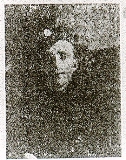
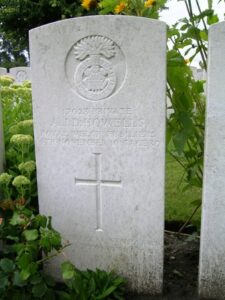
Gilbert John Jones, Private, 13788, Kings Shropshire Light Infantry. Gilbert was born at Pembroke Dock in 1891, the son of John and Elizabeth Jones. By 1911 the family was residing at 3, Upper Row, Golden Hill, Pembroke. Gilbert enlisted at Maesteg into the army and was posted to the 7th Battalion, King’s Shropshire Light Infantry, which was attached to 76 Brigade, 25th Division. The battalion moved to France on 28 September 1915, where it was transferred to the 3rd Division, which was at Ypres. In the summer of 1916, the Division moved to the Somme, and took part in the Battle of Albert, and at the Battle of Bazentin, where they captured Longueval. They then took part in the Battle of Delville Wood, and the Battle of the Ancre, before settling into another bleak winter in France. In May 1917 the Division were at Arras, and it was here that Gilbert was killed on 3 May 1917, aged 26. Gilbert has no known grave, and is commemorated on Bay 7 of the Arras Memorial, France. (The war memorial shows C. J. Jones, but is probably incorrect).
John Jones, Lance Corporal, 9250, Royal Welsh Fusiliers. John was the son of John and Mary Jones, of 20, Williamson Street, Orange Gardens, Pembroke. He enlisted at Tonypandy on 4 September 1906 into the Royal Welsh Fusiliers, and had served in India for several years prior to returning home. At the outbreak of war John was serving with the 1st Battalion, Royal Welsh Fusiliers, which was attached to 22 Brigade, 7th Division. The Division was formed during September 1914 and landed at Zeebrugge on the 6th October, 1914. The City was already falling however, and so the Division was moved to Ypres, where they became the first British Division to hold the city. They fought during the First Battle of Ypres, and helped stop the German advance through Belgium, and in March, 1915 fought at the Battle of Neuve Chapelle. During May they fought at the Battle of Aubers Ridge, and at Festubert, before taking part in the Battle of Loos in September. John survived Loos, but was killed in action later in the year, on 30 October 1915, aged 30. He is buried at Guards Cemetery, Windy Corner, Cuinchy, France.
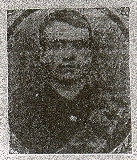
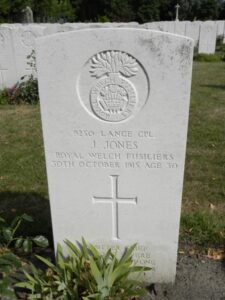
Stuart Kirby Jones, Lieutenant, Army Veterinary Corps. Stuart was born at Wavertree, Liverpool in 1888, the son of William and Alexandrina Jones. He was a Graduate of Liverpool University, becoming a M.R.C.V.S., and resided at Pembroke, where he worked as the Council’s Veterinary Inspector. Stuart was gazetted into the Army Veterinary Corps Reserve on 18 November 1911, and when the war broke out he was sent to France attached to the 25th Brigade, Royal Field Artillery. The Brigade was attached to the 1st Division, and landed in France at the start of the war. It then moved to positions on the Belgian border, and took part in the Battle of Mons, and the retreat to the Marne. During the resulting Battle of the Aisne, he was seriously wounded by shell fire which shattered his leg, and he died three days later on 18 September 1914, aged 25, at No 2 General Hospital, Versailles. Stuart is buried in Les Gonards Cemetery, Versailles, France.
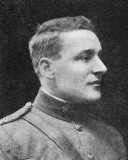
Reginald Harry Male, Lance Corporal, 46366, Machine Gun Corps. Reginald was the son of George Henry and Caroline Fanny Male. George was a Postmaster at Pembroke prior to the war, and retired to Holland House, Church Street, Malvern. Reginald enlisted at Winchester into the Hampshire Yeomanry. He later transferred into the Machine Gun Corps, serving with their 6th Battalion, attached to the 6th Division. The division had been on the Western Front since the outbreak of war, and had fought at most of the major battles since. In the spring of 1918 the Division was one of those hit by the German Offensive on the Somme, which had been launched on 21 March 1918, and the Division took part in the Battle of St Quentin. They were moved from the line, and went to Flanders to rest, but the following month the Germans launched another offensive on the Lys, and the Division fought during the Battle of Bailleul, the First Battle of Kemmel, and the Second Battle of Kemmel. During August, 1918 the Allies had recovered sufficiently to be able to launch their own attacks on the Germans, and after a brilliant victory at Villers Brettoneux on the 8th August, attacks were launched at Albert. The 6th Division took part in the Advance in Flanders, before moving south, where they took part in the advance on the Hindenburg Line, during the Battle of Épehy, which is where Reginald was killed on 18 September 1918, aged 21. He is buried at Trefcon British Cemetery, Caulaincourt, France.

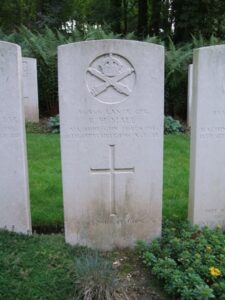
Luke McCrann, Lance Corporal, 29785, Duke of Edinburgh’s Wiltshire Regiment. Luke was the son of Thomas and Ann McCrann, of Golden Hill, Pembroke. He enlisted into the Somerset Light Infantry, but later transferred to the 1st Battalion, Wiltshire Regiment. The battalion had been in France since the outbreak of war as part of 7 Brigade, 3rd Division, and had fought at most of the main battles of the war. In November the Division moved south again, where they fought at the Battle of Cambrai, and they were in the area during March, 1918 when the German Spring Offensive swept through the British lines, at the Battle of St Quentin and the First Battle of Bapaume. They then fought at the First Battle of Arras, 1918 before being moved to Flanders to rebuild. However the Germans switched the focus of their offensive to Flanders, and the Division were caught up in the worst of the fighting there, at the Battle of Estaires. Luke was killed here on 12 April 1918, aged 21. He is commemorated on the Ploegsteert Memorial, Belgium.
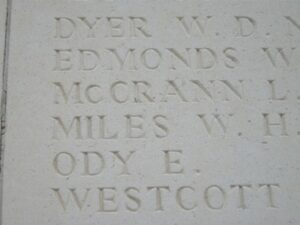
Percival Alfred Nicholls, Shipwright, 343493, Royal Navy. Percival was born in 1885, the son of James and Rosa Nicholls, of The Green, Pembroke. He served with the Royal Navy during the Great War, aboard HMS Albion, a Canopus Class pre-dreadnought battleship. Albion had served at Gallipoli, where her guns were used to support the landings, and remained in the Mediterranean for the remainder of the war. Percival’s health suffered as a result of his military service and he appears to have contracted tuberculosis while serving aboard HMS Albermarle. He was discharged from the Royal Navy on 21 February 1919 and died at Tregaron Sanatorium on 26 February 1920, at the age of 35.
William George Paish, Lance Corporal, 1995, Cavalry. William was born at Trimulgherry, India, and resided at Pembroke prior to the war. He enlisted there into the 17th Lancers, Duke of Cambridge’s Own, which was attached to 7 Cavalry Brigade, 3rd Cavalry Division. The division had been in France since attempting to stem the German advance on Antwerp, and had fought at the Battles of Ypres, Loos and Arras. It took part in the opening of the Battle of Amiens, south of the River Somme, on 8 August 1918, which was the battle which turned the course of the war. William was killed that day, on 8 August 1918, aged 23. He is buried at Manitoba Cemetery, Caix, France.
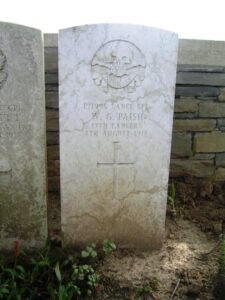
William George Perkins, Private, 23031, Royal Welsh Fusiliers. William was born in 1893, the son of John and Martha Perkins, of The Green, Pembroke. He lived at Maesteg prior to the war. He enlisted at Bridgend into the 10th Battalion, Royal Welsh Fusiliers, which was part of 76 Brigade, 3rd Division. The division was at Loos when the 10th RWF joined it, and moved to the Ypres Salient, where they fought at the Bluff and at the St. Eloi Craters before moving to the Somme area. They fought at the outset of the Somme Offensive, right through to the final Battle of the Ancre, which is where William was killed on the 13 November 1916. He has no known grave, and is commemorated on the Thiepval Memorial, France.
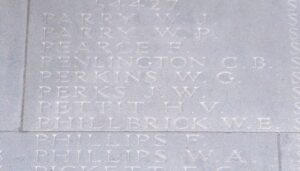
Phillip Picton, Private, 2189, Welsh Guards. Phillip was the son of Philip and Elizabeth Picton, of 4, Owen Street, Orange Gardens, Pembroke. He enlisted at Pembroke into the 1st Battalion, Welsh Guards, a regiment which was formed 26 February 1915 by Royal Warrant. The new 1st Battalion joined 3 Guards Brigade, Guards Division. This Division has the distinction of being formed in France in August 1915. The various Guards units that had been with other Divisions were withdrawn to be brought together to create this fine formation. It remained on the Western Front throughout the war and saw its first major action during the Battle of Loos on the 25th September, 1915, remaining in the area during the coming months, where they also fought in the subsequent Action of Hohenzollern Redoubt. In July, 1916 the Division moved to the Somme, where they fought at the Battle of Flers-Courcelette, and then at the Battle of Morval, capturing Lesbouefs Village. They remained on the Somme throughout the hard winter of 1916/1917, and Phillip took ill here with bronchitis, sadly dying on 10 February 1917. He was 25 years old and is buried at Grove Town Cemetery, Meaulte.
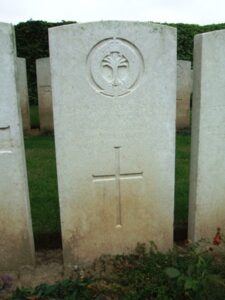
Frederick Crispin Rake, Sapper, 17250, Royal Engineers. Frederick was the son of Frederick Hockey Rake, of 58, Marine Parade, Brighton. He had married Esther Ann Lloyd on 13 June 1914, and the couple resided at 3, Thomas Street, Orange Gardens, Pembroke. Frederick was a regular soldier, and had enlisted at London into the Royal Engineers in 1908, training as an electrician. At the outbreak of war, he was posted to their 13th Base Park Company. The company moved to the Mediterranean early in 1915, and was tasked with the building of a military encampment, hospitals and landing piers on Mudros Island, ready for the forthcoming Gallipoli campaign. Frederick was sent ashore with a work party at Lancashire Landing, Gallipoli, and he was wounded there in July, and sadly died as a result on 20 July 1915. He was 27 years old, and is buried at Lancashire Landing Cemetery, Gallipoli.
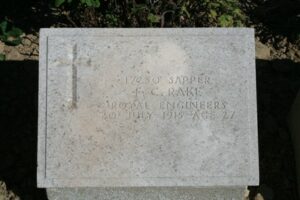
William John Roberts, Private, 35126, South Wales Borderers. William was the son of John Roberts, of 21, Middle Prospect Place, Pembroke. He resided at Kidwelly prior to the war. He enlisted at Llanelli into the 12th Battalion, South Wales Borderers, who were attached to the 119th Brigade, 40th (Bantam) Division. This Division was formed between September and December 1915, composed of bantam units and others which had a mixture of regulation-height and shorter men. Weeding out of very under-sized or unfit men delayed the training programme, and it was not until late spring 1916 that the Division was ready to proceed on active service. The Division moved to France between the 1st and 9th June, and moved to the front near Loos. Late in 1916 they moved south to the Somme, and fought at the Battle of the Ancre, and remained in the area over the winter. In March, 1917 the Germans withdrew to their shortened line, called the Hindenburg Line, and the 40th Division were one of the Divisions that followed the withdrawal. William was killed in action near the Hindenburg Line on 4 May 1917, aged 30. He is buried at Fins New British Cemetery, Sorel-Le-Grand, France.
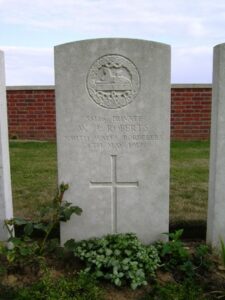
Percival Lewis Scorey, Warrant Shipwright, 345927, Royal Navy. Percival was born at St. Mary’s, Pembroke on the 24 January 1888, the son of George and Ellen Scorey. He was a Royal Navy regular, serving aboard HMS Curacoa, a Light Cruiser that had been built at Pembroke Dockyards, and launched in May 1917. She was commissioned in February 1918, and so Percival, as a Shipwright, must have been one of the crew that built her, and then was taken on as a crew member. Sadly Percival died at Samford, Suffolk on 1 December 1918, aged 30. He is buried at Pembroke (St. Daniel) Churchyard. Due to the poor state of the Churchyard the location of his grave cannot be found and as a result of the work of Les Nixon, who pointed this out to the CWGC whilst photographing graves for this website, a new Special Memorial headstone has recently been erected in a cleared part of the Churchyard.
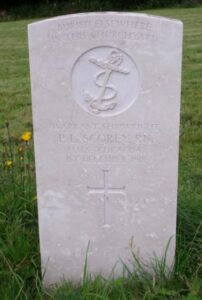
James Skone, Private, 36224, Welsh Regiment. The story of James Skone tells a sad part of the towns’ history during the Great War, as he was one of two men of Pembrokeshire to be shot at dawn during the course of the war. James was born on 10 June 1879, the son of John and Catherine Skone, of 13, Orange Gardens, Pembroke. He was an old soldier, who had been recalled to the colours after having served with the South Wales Borderers, and served in one of the regular Welsh Regiment battalions, the 2nd Battalion, which was attached to 3 Brigade, 1st Division. The 1st Division had been one of the first divisions on the Western Front, and had seen action from the initial Battle of Mons in August 1914. They had fought during most of the major battles of the war, and were in the trenches at Gorre, near Bethune on 13 April 1918 when James, allegedly drunk, shot and killed his Sergeant, Edwin Williams. After a Court Martial, James was found guilty of murder, and sentenced to death by firing squad. His punishment was carried out at Hersin at dawn on 10 May 1918. James was by then 39 years old, and was buried at Hersin Communal Cemetery, France. Below is the Shot at Dawn Memorial at the National Memorial Arboretum which remembers the men who died in this way. Each stake represents each man shot at dawn during the Great War. His step-brother Sidney John Skone had recently been killed.
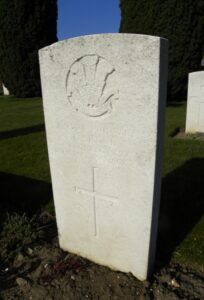
Sidney John Skone, Private, 48899, Lancashire Fusiliers. Sidney was born at St. Mary’s, Pembroke, the son of John and Mary Skone, of 13, Orange Gardens, Pembroke. Sidney resided at Llanelli prior to the war. He enlisted there into the Army and was posted to the 10th Battalion, Lancashire Fusiliers, which was attached to 52 Brigade, 17th (Northern) Division. During July 1915 the Division landed in France, and spent their initial period of trench familiarisation and then holding the front lines in the southern area of the Ypres salient. Here they took part in fighting at the Bluff during February 1916 before moving south, where they fought at the Battle of Albert, where the Division captured Fricourt at heavy cost during the opening of the Somme Offensive. They then saw action during the Battle of Arras, at the First and Second Battles of the Scarpe and the Capture of Roeux, before moving back to Ypres, and taking part in the First and Second Battles of Passchendaele. In March, 1918 the Division were on the Somme, Sidney was wounded here and sadly died as a result on 1 March 1918, aged 29. He is buried at Hermies Hill British Cemetery, France. His step-brother James was shot at dawn in May 1918.

John Evan Gordon Thomas, Lance Corporal, 9920, South Staffordshire Regiment. John was born on 27 November 1888 at Neyland, where his parents William and Mary were Grocers. The family moved, in 1900, to Pembroke, and lived for many years at Somerset House, Merchants Park, Pembroke. His father was the local agent for Singer Sewing Machines and a leading member of the Pembroke Undenominational Mission Band. On leaving school John was Apprenticed as a Coach Painter, and probably enlisted in the summer of 1914, joining the 7th Battalion South Staffordshire Regiment. John first saw action at Gallipoli, landing at Suvla Bay with the battalion on 7 August 1915. The Battalion was withdrawn in December 1915 and transferred to defensive duties in Egypt before being posted to France in July 1916. At some time, John transferred to the 1st Battalion South Staffordshire Regiment. He was with them on 28 March 1917 when they launched an attack on Courcelles whilst following up the German retreat to the Hindenburg Line. John, along with 129 other ranks, were Killed in Action that day as well as a number of Officers. John was 29 years old and is buried at St Leger British Cemetery, France. The base of his headstone bears the inscription; ‘Thou wilt keep him in perfect peace whose mind is stayed on thee.’ Thanks to Trevor Stinton for the additional information.
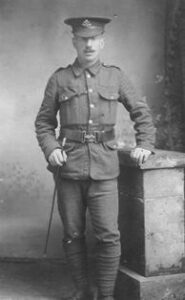
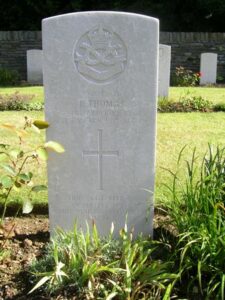
William James Thomas, Private, 31160, South Wales Borderers. William was the son of Rachel Thomas, of Priory Moor, Maiden Wells. He enlisted at Pembroke into the 5th Battalion, South Wales Borderers. This was to become the Pioneer Battalion to the 19th (Western) Division. The Division suffered heavy losses at the Somme in 1916 and at Ypres in 1917, and also in 1918 were at the fore-front of many of the great battles. They fought in Flanders during late summer 1918, in the Battle of the Selle, during the great 100 days offensive. William was wounded at some time during the battle, and died of his wounds, on 20 October, 1918. He is buried in Delsaux Farm Cemetery, Beugny.
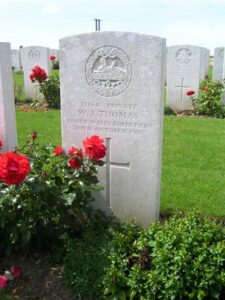
Richard Edward Lewis Treweeks, Lieutenant Commander, Royal Navy. Richard was born at St. Mary’s, Pembroke in 1883, the son of Richard and Gertrude Treweeks. He was a regular officer in the Royal Navy, and married Dorothy Martha Caistor whilst on leave in January 1914. Richard served aboard H.M.S. Natal, a Duke of Edinburgh Class Armoured Cruiser which formed part of the Grand Fleet. On 30 December 1915 Natal was lying in the Cromarty Firth with her squadron, under the command of Captain Eric Back RN. Shortly after 3.20pm, and without warning, a series of violent explosions tore through the ship. She capsized five minutes later. The most probable explanation was that a fire had broken out, possibly due to faulty cordite that ignited a magazine. Around 400 men were killed, some in the immediate explosions, others drowned as the ship capsized, or succumbed to the freezing water of the Cromarty Firth. Some bodies were recovered and given a proper burial, but Richard went down with the ship, and so he is commemorated on the Chatham Naval Memorial, Kent.
James George Young, Mechanician, 292787, Royal Navy. James was born on 19 February 1881, the son of William and Rose Young, of Portsmouth. He was the husband of Annie Young, of 30, Williamson Street, Orange Gardens, Pembroke. James served as a Mechanician aboard HMS Hampshire, which was a Devonshire Class Armoured Cruiser. She fought at the battle of Jutland on 31 May 1916, and immediately after the battle, was directed to carry Lord Kitchener from Scapa Flow on a diplomatic mission to Russia. In a strong gale on 5 June 1916, Hampshire struck a German mine, and sank, with the loss of all bar 12 of her crew. Among the dead was James. He was 33 years old, and is commemorated on the Portsmouth Naval Memorial, Hampshire.
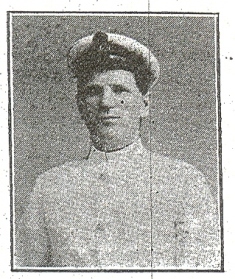
World War Two, 1939-1945
Phillip Dennis Byrne, Sergeant (Flight Engineer), 534732, Royal Air Force. Phillip was the son of Patrick and Frances Byrne, and the husband of Elsie Mary Byrne, of Pembroke. He served with 15 Squadron, RAF, which was equipped with the Bristol Blenheim. Phillip was killed when his Blenheim was shot down over Holland on 26 July 1942. He was 28 years old, and is buried at Jonkerbos War Cemetery, Netherlands.
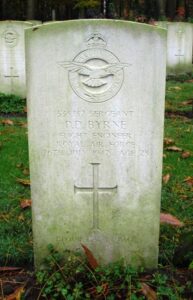
H. G. Davies. Cannot be positively identified.
William Mansfield, Corporal, 1326666, Royal Air Force Volunteer Reserve. William was the Husband of Ethel Kate Mansfield, of Orange Gardens, Pembroke. He served during the war with the RAF, and died on 9 March 1945. He was 56 years old, and is buried at Pembroke (St. Daniel) Churchyard.
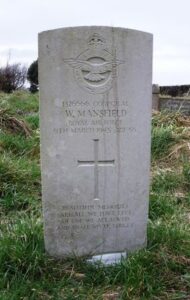
Cyril Henry Monk, Leading Aircraftman, 1079992, Royal Air Force Volunteer Reserve. Cyril was the son of Alice Monk, of Pembroke. He served with the RAF during the war, but died on 15 December 1943. Cyril was 23 years old, and is buried at Pembroke (St. Daniel) Churchyard.
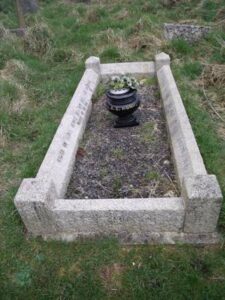
Ronald Isaac Morris, Lance Bombardier, 860872, Royal Artillery. Ronald was born at Pembroke in 1915. He enlisted into the army and was posted to 3 Field Regiment, Royal Artillery. The regiment was in India when war broke out, then transferred to Iraq with the 10th Indian Division, prior to moving to North Africa. The regiment served with the 5th Indian Division and the 2nd South African Division before joining the 7th Armoured Division, the famed Desert Rats. Ronald was posted as missing in action during the campaign in Libya, but was later found to have been killed in action on 12 June 1942. The 27-year-old is buried in Knightsbridge War Cemetery, Acroma, Libya.
J. A. Treweeks. Cannot be positively identified.
Edward Donovan Scott Usher, Lance Bombardier, 844167, Royal Artillery. Edward was the son of John and Beatrice Usher, of Pembroke, and the husband of Phyllis I. Usher, of Pembroke. He served with 95 Anti-Tank Regiment, Royal Artillery. Edward was wounded during the campaign in the Western Desert, and died on 3 November 1942. He was 29 years old, and is buried at Heliopolis War Cemetery, Egypt.